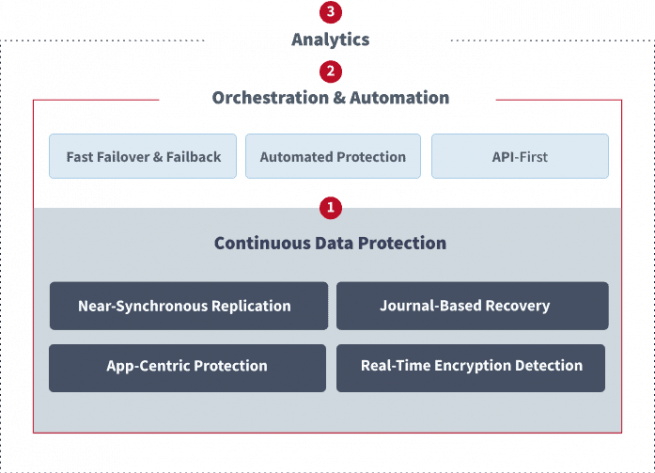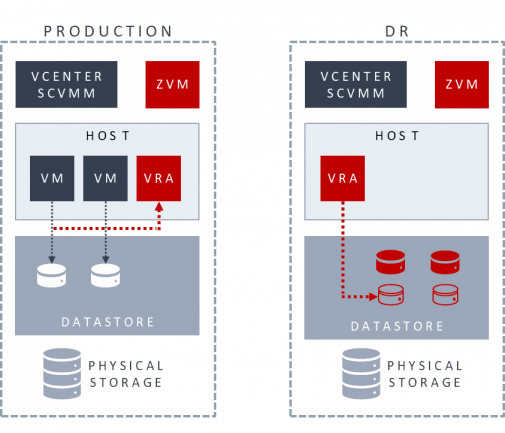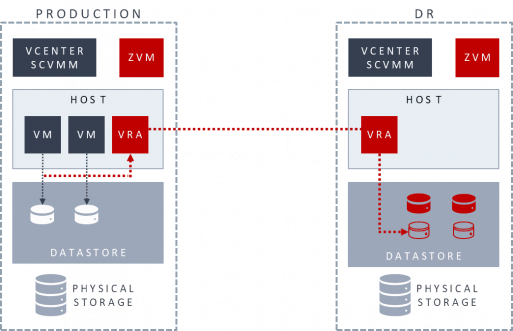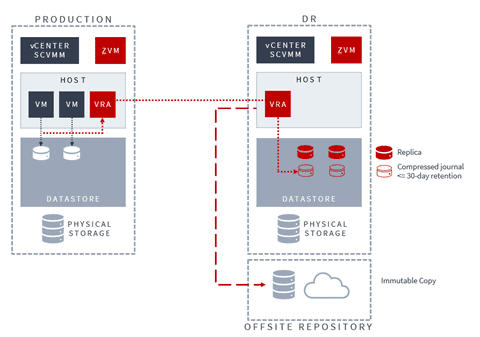How Zerto Works
Discover how Zerto is blazing new paths forward for disaster recovery, ransomware resilience, and multi-cloud mobility
Overview
Best-in-class continuous data protection (CDP) powers Zerto to deliver a software-only solution that’s fundamentally different from anything else on the market. Discover what Zerto can do for you.
LEARN MORE:


Continuous Data Protection
CDP protects everything from small environments to complex multi-cloud environments with VM counts in the five digits. No matter the size of your environment, you can enjoy RPOs of seconds and RTOs of minutes with fully orchestrated disaster recovery running on the infrastructure of your choice.
Near-Synchronous Replication
Software-Only and Agentless
Local or Remote
No Impact on Production
Journal-Based Recovery
Point-in-Time recovery
Granularity of Seconds
Site, Application, VM, File-Level
Consistent Application Protection
Logical Consistency Groups
Multi-VM Application Recovery
Real-Time Encryption Detection
Always-on detection
Signatureless detection method
Included out of the box

Orchestration and Automation
One simple, scalable solution saves you time and resources while making it easier and faster to manage workloads at scale
Fast Failover and Failback
Perform failovers instantly with non-disruptive failover testing and live workflows that don't impact production.
Automated Protection
Automatically protect VMs to ensure complete, flexible data protection across your environment, even when new VMs get added or replication loads need auto-rebalancing.
Auto-Protecting VMs with Zerto
To exit, click outside the image
APIs
Integrate with other solutions, customize protection and streamline operations with rich set of Swagger-based RESTful APIs and PowerShell cmdlets.

Analytics
Complete visibility and insights across multi-site and multi-cloud environments, plus predictive modeling—all at no additional cost.
Zerto Components
ZVM: Zerto Virtual Manager
ZVM manages everything needed for replication between the production and recovery sites, except for the actual replication of data.
VRA: Virtual Replication Manager
This appliance manages data replication from protected entities to its local and/or remote target where it stores the data in the journal.
VPGs: Virtual Protection Groups
VPGs enable consistent recovery of an entire multi-VM application, and all its dependencies, to the exact same point in time, even if the VMs reside on disparate datastores or hosts.
Zerto Journal
The journal stores all changes for a user-defined period, from one hour up to 30 days. It allows you to recover to any point in time within that journal using recovery points that are only separated by 5-10 seconds.

Zerto Components in a DR architecture within a virtualized environment
What's Next
Have a question about our product or capabilities? Contact us, we are here to help!
Try Zerto
Want to give Zerto a try? Get a free 14-day license or access to our on-demand labs.
Let's Start
Fill out a quick form and discuss your goals with our specialists.



